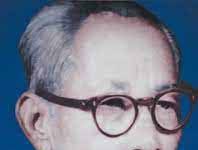A P J Abdul Kalam the People’s President
A P J Abdul Kalam the People’s President, A P J Abdul Kala
A P J Abdul Kalam the People’s President
On 15th October 1932, a child was born with a broad face, dark complexion, pointed nose and thoughtful look to middle-class illiterate parents in a small village in Rameswaram, Tamil Nadu who with the passing of time became a reputed scientist, great inspiring teacher, generous humanitarian and the 11th President of India. His parents, Jainul Abedeen being his father and Asiyamma his mother, named him Avul Pakir Jainulabedeen Abdul Kalam, metaphorically known all over the world as ‘Missile Man of India’ and unanimously hailed by the Indians as ‘the People’s President’. His father Jainulabedeen was only a boatman who fed his family by ferrying pilgrims between Rameshwaram and Danushkudi. His mother Asiyamma was a simple, compassionate, pious, generous housewife who took pride in feeding outsiders at their home regularly.
Little Kalam learned compassion from his mother and strict discipline from his cousin Jalaludeen, who was nearly sixteen years elder to him, and religious tolerance and social integration from his father.
Kalam the fourth but youngest of four children of his parents was born in such a time when few parents sent their children to school. But Kalam’s parents, though illiterate were anxious to educate their children and when Kalam was about six years old he was sent to a nearby village school where he learned his mother tongue Tamil and some English. As a student Kalam seemed not to be brilliant enough though he was not a dull one. Since the very beginning of Kalam’s schooling, he seemed to have a special attraction to Mathematics. In addition to studying his curriculum, he formed a habit of reading book after book. There was a man by the name of A. C. Manikan in his neighborhood who owned a private library and Kalam frequented the library and read books voraciously which did not only increase the store of his knowledge but also widened his outlook on life. During Kalam’s school life his parents fell into economic hardship and Kalam had to sell newspapers in his off time to earn some extra money to meet his own expense.
After completing his Primary Education, Kalam was admitted into Ramanathpuram Scartz High School. One day during his High School life, when the class was running on, Kalam was walking about outside the classroom for which the teacher got angry with him and punished him in presence of all the students. After a few months of that event, Kalam secured a hundred percent mark in Mathematics on the examination and then the same teacher (who punished him) became very happy and in praise of Kalam prophesied, “This boy would carry on pride to our school in future.”
After completing his Matriculation at Ramanathapuram Scartz High School, he went to Tiruchirappalli in 1950 for higher education and obtained B. Sc. degree in Physics from the esteemed St. Joseph’s College in 1954. During his college life, Kalam became interested in English literature and read out the writings of Sir Walter Scot, Thomas Hardy, Leo Tolstoy and some others. After becoming a Bachelor of Science he went to Madras Institute of Technology to study aeronautical engineering and obtained a diploma. He wanted to be a pilot but the chance did not favour him.
As his hope of becoming an aeroplane pilot was nipped in the bud, he searched for a job and soon got a position at the Directorate of Technical Development and Production in Delhi in 1955.
Three years later of that he was posted to the Aeronautical Development Establishment in Bangalore. Here he designed and operated the country’s first ground-effect machine or hovercraft called NANDI, which attracted a great deal of technical and political attention. Although a flying prototype won excited praise from Defense Minister V. K. Krishna Menon. Fortunately Menon the then Director of TIFR was quick to recognize Kalam’s unusual abilities, drive and passion which led to Vikram Sarabhai the then head of the Indian National Committee for Space Research hired Kalam in 1964 as a Rocket Engineer at the Thumba Equatorial Rocket Launching Station near Thiruvananthapuram (Trivandrum). There Kalam led a series of programs including fiber-reinforced plastic technology development, and became Chief Designer for a Rocket-Assisted Take-Off system for aircraft and became a popular figure among the engineers working there. They affectionately called him ‘Kalam Iyer’.
In 1963 A P J Abdul Kalam was sent to the USA for a six-month training program on sounding rocket launching techniques. Kalam had learned the space technology during that visit, but what attracted Kalam most was a painting at Wallops Island depicting Tipu Sultan’s soldiers using rockets against the British during the Anglo- Mysore war in the 18th century. After the successful launches of sounding rockets, Sarabhai began conceptualizing an Indian Satellite Launch Vehicle (SLV).
Meanwhile, in 1972, Satish Dhawan had taken over as Chairman of a reorganized ISRO and Kalam was appointed Project Manager of the SLV-3 mission. But the first launch failed. However, the second one launched a year later succeeded. Failure of the first launch began to be seen as the first step to success. The outlook of the organization as a whole about their own capabilities became much more confident and made it possible for them to dream of bigger enterprises. In short, what later became famous as ‘ISRO Culture’ was born.
As SLV development was completed, Kalam went on to become the Director of ISRO Launch Vehicle and moved to Headquarters in Bangalore. During his tenure at ISRO, India launches some satellites such as PRITHVI, ROHINI, AGNI, TRISHUL, NAG etc.
In 1999 Kalam was appointed as the Chief Science Advisor of the Government of India. The Government gave him the status of a Cabinet Minister. But Kalam resigned from the post and joined Anna University in Chennai as a professor.
Dr. Abdul Kalam was elected, winning over ninety percent of votes, as the 11th President of independent India in July 2002. As a President, he shared his vision for India, addressing youth and old with the same passion which formed his entire life. Dr. Kalam was passionate about transforming society through technology especially in inspiring the youth of India to harness Science and Technology for human welfare. During his tenure of Presidentship, he worked day and night for the all-round development of the nation and he tried his best to keep in contact with all classes of people.
A. P. J. Avul Pakir Jainulabedeen Abdul Kalam was a teacher with an extraordinary personality. Whenever he went, during his Presidentship and even after he took retirement, he met students, talked with them and inspires them to be ignited from within. He appreciated best that the future of a strong and powerful India depends on her student community. He realized the truth that if the citizens of a nation are well-educated with value power then they can lead a nation ahead with glory. Hence he often talked with the students and exchanged thoughts with them. He was a teacher not that he taught the students within the classroom but that wherever he went he woke up their thirst for knowledge. Thus he was a great teacher in the truest sense of the term.
He gave emphasis on the value power of man and he thought that it should be inculcated in the students from their initial stage of life.
Here to say that this Oath propagated by the great teacher A. P. J. Abdul Kalam should be prescribed in all educational institutes to be uttered solemnly by the students every day, especially in the morning assembly.
Abdul Kalam was an ideal symbol of piety, honesty, simplicity, generosity and communal integrity. He had great faith in God and performed salat (prayer) according to Islamic tradition. He realized that only religion can keep one’s mind in balance. It teaches humans the lessons of love, brotherly affection, kindness, honesty and all other humane qualities.
All his life, Kalam led a self-controlled life. He gave much importance to work culture that he never married nor did he have any children. He did not crave personal wealth nor did he run after the comforts of life. ‘Work for a better nation’ was the motto of his life and he observed this motto in every walk of life.
There are ample instances of his simplicity and generosity among which one is that when he as the 11th President of India entered the Rashtrapati Bhawan he had a bag in his hand and after the end of his tenure of Presidentship he came out of the Rashtrapati Bhawan with the bag in hand and nothing else. What a wonderful man he was!
To say about his personal property there were six long pants two of which were uniforms presented by DRDO, a pair of shirts and two thousand five hundred books. Besides these, he had a website, a Twitter account, an Email address and 16 Doctorate degrees bestowed upon him by 16 different universities of the world. Unlike every other he did not have any T. V. set nor did have any bank balance, or a motor car. In addition to these, he had a personal flat but he donated it to a science institute for research work. He donated the lion’s share of his salary that he was paid during his Presidentship to various NGOs and along with these, he donated all the money that he got as a pension to the Panchayat of his village for development work.
He never thought of himself to be VIP or a special one and when he was offered a special chair in any seminar or meeting he denied taking the privilege.
In the Rashtrapati Bhawan, there is a tradition of arranging an Itfar Party every year. Abdul Kalam became the President of India in the month of Ramadan, 2002 and as the tradition, he had to arrange the ‘Ifter Party’ but when he calculated that it would cost an amount of about 22 lacs then he decided to cancel the party and instead he donated these amount of money to an orphan house for buying food and clothes.
When he was asked what one should be remembered for? Then he replied, “You have to evolve yourself and shape your life. You should write it on a page. That page may be a very important page in the book of human history. And you will be remembered for creating that one page in the history of the nation – whether that page is the page of invention, the page of innovation or the page of discovery or the page of creating societal change, or the page of removing the poverty or the page of fighting injustice or planning and executing the mission of networking of rivers.’’
There is no doubt that Abdul Kalam was a man of action and one of the busiest persons ever born on the earth yet in between his busiest time he had written some valuable books among which mention may be made of ‘Developments in Fluid Mechanics and Space Technology’, ‘India Vision 2020’, ‘Ignited Minds’, ‘The Luminous Spark’, ‘Mission India’, ‘Inspiring Thoughts’, ‘Indomitable Spirit’, ‘You are Born to Blossom’: ‘Take My Journey Beyond, Turning Points: A Journey Through Challenges’, ‘Target 3 Billion’, ‘My Journey: Transforming Dreams into Actions’, ‘A Manifesto for Change’, ‘Forge Your Future’, ‘Reignited: Scientific Pathways to a Brighter Future. Etc.
Most of his books are autobiographical which reflect his journey from dream to action and reality. His books may work as sources of inspiration for the young generation in making their life meaningful. Besides these books mentioned above, Kalam wrote some poems occasionally. His poems may not be rich in poetic qualities but they are full of inspiring messages. Love for man and love for motherland are the chief themes of his poetry.
Avul Pakir Jainulabedeen Abdul Kalam, who is called the ‘Missile Man of India’ and hailed as the ‘People’s President’ won many honours and awards as recognition of his contributions to the nation among which mention may be made at random of sixteen Honorary Doctorate Degrees from various Universities of the world, Hoover Medal (from ASME Foundation, USA), International von Karman Wings Award (from California Institute of Technology, USA), King Charles II Medal (Royal Society, UK), Ramanujan Award (from Alwars Research Centre, Chennai), Veer Savarkar Award (Government of India), Indira Gandhi Award for National Integration (Government of India), Bharat Ratna (Government of India), Padma Vibhushan (Government of India), Padma Bhushan (Government of India).
Avul Pakir Jainuabedeen Abdul Kalam passed away on 27th July 2015 as he had just begun to address students at the Indian Institute of Management at Shillong leaving behind him a legend to draw inspiration for the future generations. 0 0 0.
A P J Abdul Kalam the People’s President
N.B. The article ‘A P J Abdul Kalam the People’s President’ originally belongs to the book ‘The World Writers-Brief Biographies‘ by Menonim Menonimus.
A P J Abdul Kalam the People’s President
Books of Composition by M. Menonimus:
- Advertisement Writing
- Amplification Writing
- Note Making
- Paragraph Writing
- Notice Writing
- Passage Comprehension
- The Art of Poster Writing
- The Art of Letter Writing
- Report Writing
- Story Writing
- Substance Writing
- School Essays Part-I
- School Essays Part-II
- School English Grammar Part-I
- School English Grammar Part-II..
Books of S. Story by M. Menonimus:
Related Search:











